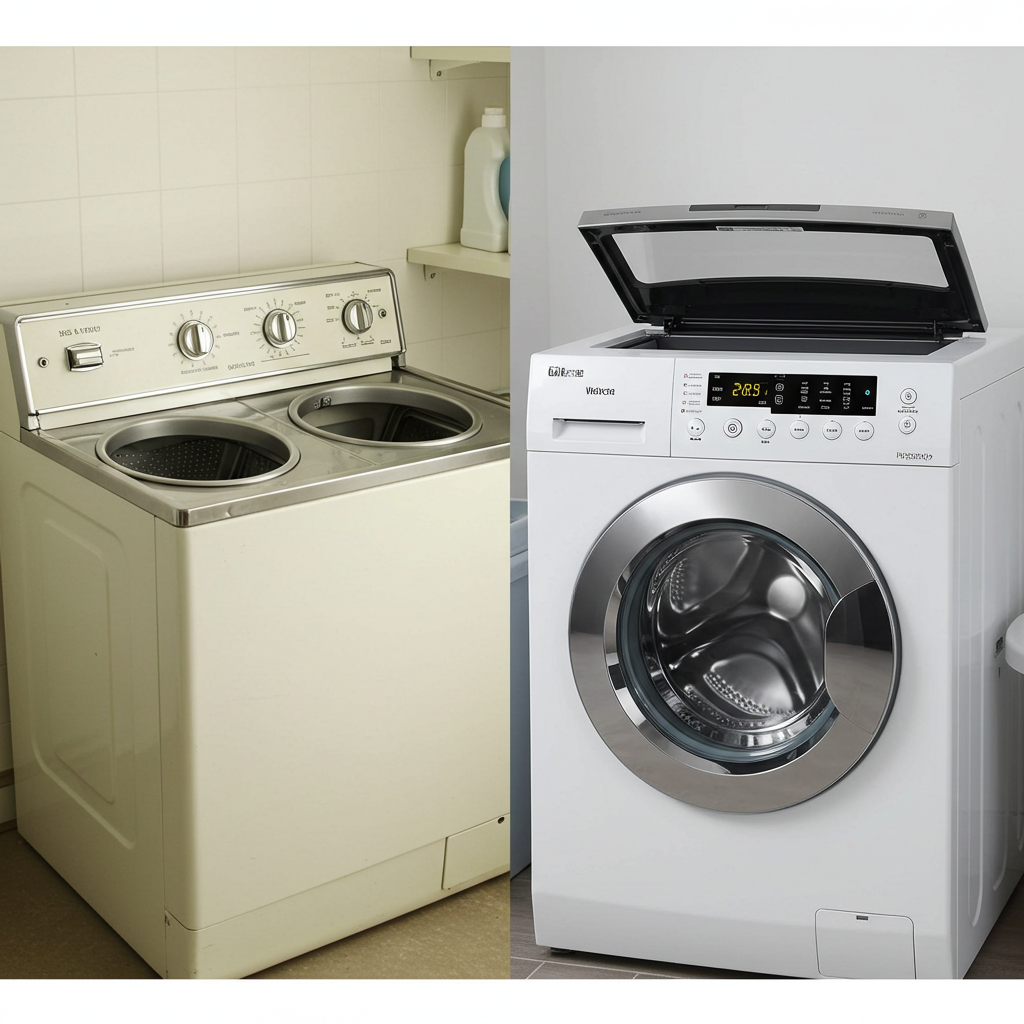
Semi-Auto vs Fully-Auto Washer: The Ultimate Indian Household Debate (Which Saves YOU More?)
Share
Laundry day in India – it's a reality! Choosing the right washing machine can make a world of difference, saving you time, effort, water, and electricity. But the big question often looms: Semi-Automatic or Fully Automatic? One seems simpler and cheaper upfront, the other promises complete convenience. Which type is truly the better fit for the demands of a modern Indian household, considering factors like water availability, power cuts, budget, and family size in places like Lucknow or Vadodara? Let's break down this classic appliance debate with practical insights.
Section 1: Understanding the Players – How They Differ
-
Semi-Automatic Washing Machines:
-
How they work: Two tubs – one for washing/rinsing, one for spin drying. Requires manual intervention: moving clothes from the wash tub to the spin tub.
-
Pros: Significantly lower purchase price, uses less water generally, lower electricity consumption, washing process can be paused/resumed easily (good during power cuts!), lighter and easier to move, often more robust with simpler mechanics. Bluechip AquaFresh series (7kg & 9kg) are great examples.
-
Cons: Requires manual effort (moving clothes), takes more user time and attention, washing process is less refined, separate water inlet/outlet needed for wash and spin (potentially).
-
Best for: Budget-conscious buyers, areas with water scarcity or frequent power cuts, users who don't mind the manual steps, smaller households (though larger capacities exist).
-
-
Fully Automatic Washing Machines (Top Load & Front Load):
-
How they work: Single tub for washing, rinsing, and spinning. Does everything automatically once you set the program.
-
Top Load Fully Auto: Clothes loaded from the top. Generally cheaper than front load, uses more water than front load, shorter wash cycles typically.
-
Front Load Fully Auto: Clothes loaded from the front. Most water and energy-efficient, generally gentler on clothes, longer wash cycles, typically the most expensive type.
-
Pros (All Fully Autos): Complete convenience (press start and forget), multiple wash programs for different fabrics, often gentler on clothes (especially front load), saves user time significantly.
-
Cons (All Fully Autos): Higher purchase price, require continuous water supply, consume more electricity than semi-autos (though energy ratings matter!), cycles can't usually be paused easily if water/power stops, heavier and fixed installation.
-
Best for: Users prioritizing convenience and time-saving, households with reliable water and power supply, those willing to invest more upfront for automation.
-
Section 2: The Real-World Indian Context – Factors to Consider
-
Water Warriors: If water is scarce or supplied intermittently in your area (common in parts of MP, Gujarat, etc.), a semi-automatic's ability to work with manually added water and lower consumption is a big plus. Fully autos need constant water pressure.
-
Power Play: Frequent power cuts? A semi-automatic cycle can be easily paused and resumed. Fully automatic cycles often need to restart, wasting water and time.
-
Budget Battle: Semi-automatics offer significant upfront savings. While fully automatics save user time, the initial cost difference is substantial.
-
Time vs. Effort: This is the core trade-off. Fully auto saves your time. Semi-auto saves money but requires your effort. Which is more valuable to you?
-
Wash Quality & Fabric Care: Front load fully autos generally offer the best wash quality and are gentlest. Top loads are a good middle ground. Semi-autos are effective but can be harsher on delicate fabrics due to the agitator/pulsator action.
-
Space Savers: Semi-autos are often lighter and don't need permanent plumbing, offering more placement flexibility.
Section 3: Capacity Matters – Choosing the Right Size (7kg vs 9kg etc.)
Don't just guess! Choose capacity based on your family size and laundry habits:
-
Small Family / Couples (2-3 people): 6-7 kg is usually sufficient (like the Bluechip AquaFresh 7kg).
-
Medium Family (4-5 people): 7-8 kg is a good fit.
-
Large Family (5+ people) / Frequent Laundry: 9kg or more is recommended to handle larger loads efficiently (like the Bluechip AquaFresh 9kg).
-
(Pro Tip): Slightly larger capacity means fewer loads per week, potentially saving time and energy in the long run.
Section 4: The Smart Choice – Which Machine Wins for YOU?
-
Choose Semi-Automatic if: Budget is tight, water/power supply is unreliable, you don't mind the manual steps, and prioritize lowest running costs.
-
Choose Fully Automatic (Top Load) if: Convenience is key, water/power is reliable, you want automation at a moderate price point.
-
Choose Fully Automatic (Front Load) if: Best wash quality, water/energy efficiency are top priorities, and budget allows for the higher initial cost.
Conclusion:
The "best" washing machine is the one that best fits your life, your budget, and your local conditions in India. Semi-automatic machines remain incredibly relevant due to their affordability, water efficiency, and resilience to power issues – the Bluechip AquaFresh series offers reliable options here. Fully automatic machines offer undeniable convenience for those who can invest in them. Weigh the pros and cons honestly against your daily reality. Making a smart choice now means hassle-free laundry days for years to come!
(Call to Action):

